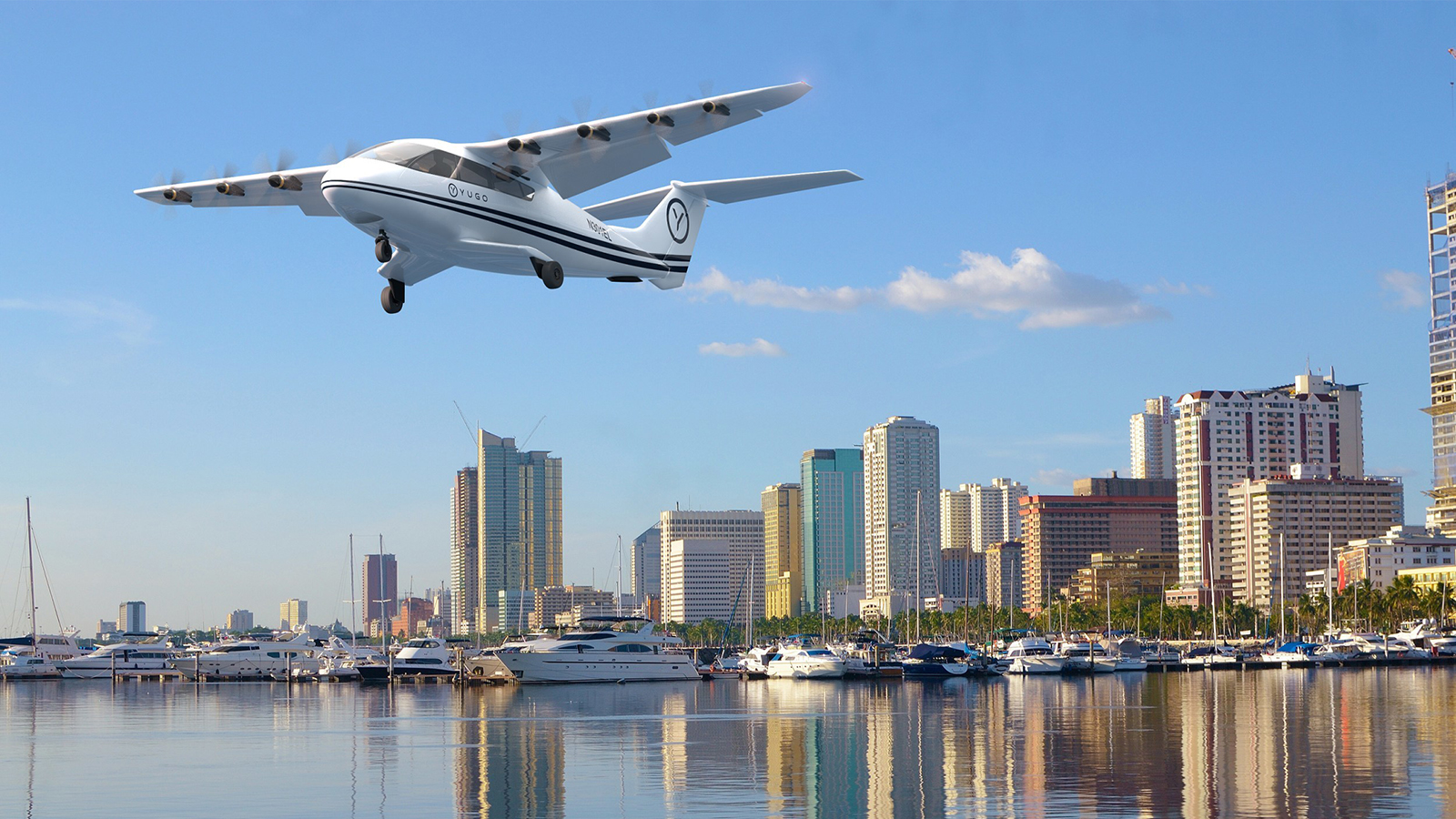Stay Up to Date
Submit your email address to receive the latest industry and Aerospace America news.
Cargo comes first, then passengers, with big emission reductions promised compared to current state of the art
AIAA AVIATION FORUM, Chicago — Advanced air mobility company Electra.aero plans to achieve a range of up to 800 kilometers with its planned hybrid-electric plane and cut carbon emissions by 30% compared to equivalent conventional aircraft, according to its chief operating officer Robie Samanta Roy.
The Electra plane, which is under development and has no name yet, would rely on eight electric propulsors, four on each wing, powered by a battery, Roy told me June 28 during an interview in front of an audience here.
The battery would be charged midflight by a fuel generator that would run on a variety of fuel types that the company is still considering, including diesel or sustainable aviation fuel. As an electric short takeoff and landing craft, or eSTOL, Roy said the Electra plane would only need between 45 and 90 meters of runway.
“You won’t have to experience range anxiety, and you don’t need any charging infrastructure,” Roy said. “So it’s that real operational flexibility that we find very exciting about what we’re doing.”
Electra wants to have a demonstrator flying the end of the year, a prototype by 2024 and certification for passenger flight by 2027, he said. Test flights would commence at Northern Virginia’s Manassas Regional Airport.
The company has no plans for autonomous flight, but its design would accommodate nine passengers and a pilot, Roy said.
“In the urban air mobility market, you’re looking at aircraft that would fly 50 miles or often less, but we’re looking at ranges from about 200 to 500 miles [320 to 800 km],” he said.
With that range capability, Electra will target regional cargo markets first, he said, followed by regional piloted passenger service.
Like most AAM companies, Electra is not designing for a bathroom on board.
“That’s going to be a luxury that we’ll have to think about down the line,” he said.
Electra believes its range will make the aircraft attractive to cargo operations, especially regional distribution warehouses, to transport up to 815 kilograms.
“Our vehicle, as an ultra-short takeoff and landing aircraft, can land essentially on a football field or soccer field, a parking lot of a distribution center, and now you can be much more efficient and responsive as you move around goods,” Roy said. For that reason, Electra has no plans to build or operate from vertiports. “Our CEO John Langford is challenging us to find ways to operate out of heliports that may have three pads adjacent.”
The company has an undisclosed amount of investment from Lockheed Martin, where Roy was formerly a vice president.
Lockheed and Electra can “work together in some collaborative way on the aerodynamics and propulsion side,” Roy said, adding that they ultimately may partner on providing the Electra aircraft for military operations.
The real secret to the success of the aircraft is a technique known as blown lift, Roy said. “The props blow air over the wing, and that essentially tricks the wing into thinking it is actually flying faster than it is, and that creates the lift needed to take off.”
Get the latest news about advanced air mobility delivered to your inbox every two weeks.
About paul brinkmann
Paul covers advanced air mobility, space launches and more for our website and the quarterly magazine. Paul joined us in 2022 and is based near Kennedy Space Center in Florida. He previously covered aerospace for United Press International and the Orlando Sentinel.
Related Posts
Stay Up to Date
Submit your email address to receive the latest industry and Aerospace America news.





